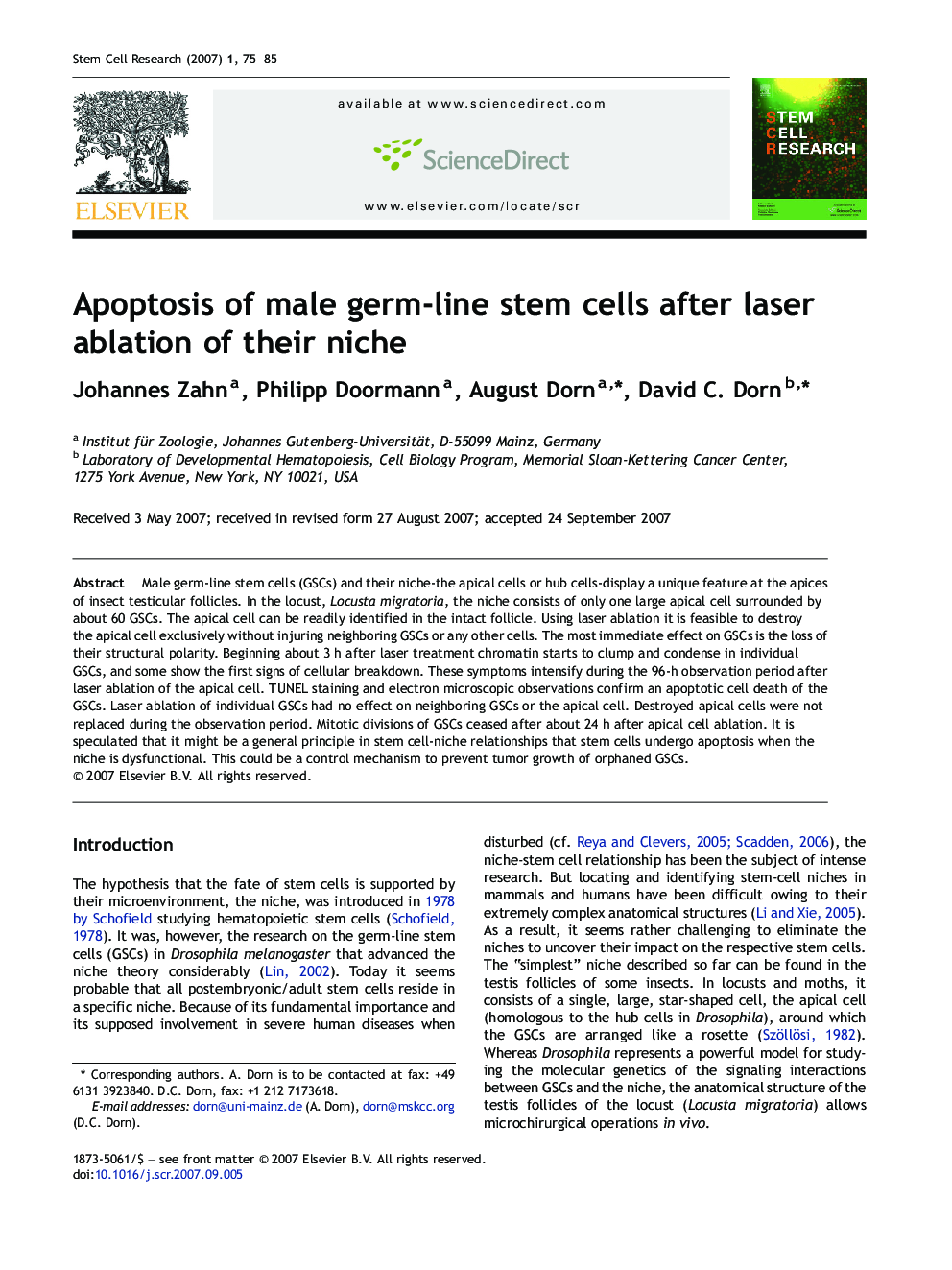| Article ID | Journal | Published Year | Pages | File Type |
|---|---|---|---|---|
| 2094460 | Stem Cell Research | 2007 | 11 Pages |
Male germ-line stem cells (GSCs) and their niche-the apical cells or hub cells-display a unique feature at the apices of insect testicular follicles. In the locust, Locusta migratoria, the niche consists of only one large apical cell surrounded by about 60 GSCs. The apical cell can be readily identified in the intact follicle. Using laser ablation it is feasible to destroy the apical cell exclusively without injuring neighboring GSCs or any other cells. The most immediate effect on GSCs is the loss of their structural polarity. Beginning about 3 h after laser treatment chromatin starts to clump and condense in individual GSCs, and some show the first signs of cellular breakdown. These symptoms intensify during the 96-h observation period after laser ablation of the apical cell. TUNEL staining and electron microscopic observations confirm an apoptotic cell death of the GSCs. Laser ablation of individual GSCs had no effect on neighboring GSCs or the apical cell. Destroyed apical cells were not replaced during the observation period. Mitotic divisions of GSCs ceased after about 24 h after apical cell ablation. It is speculated that it might be a general principle in stem cell-niche relationships that stem cells undergo apoptosis when the niche is dysfunctional. This could be a control mechanism to prevent tumor growth of orphaned GSCs.
